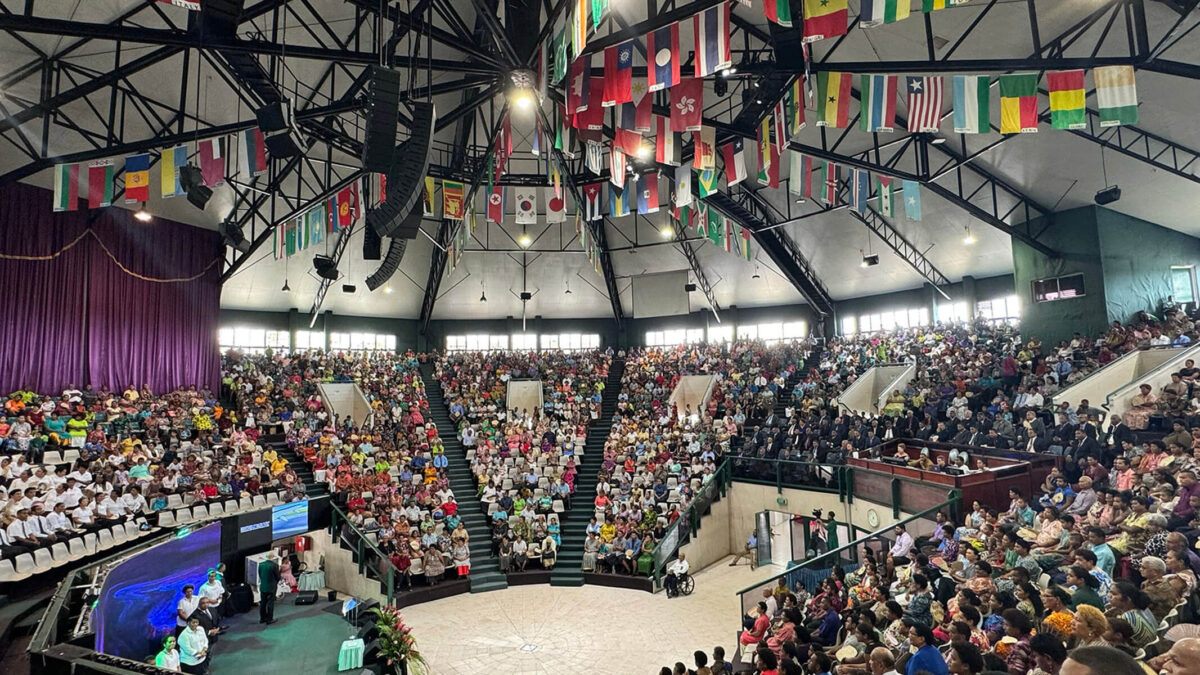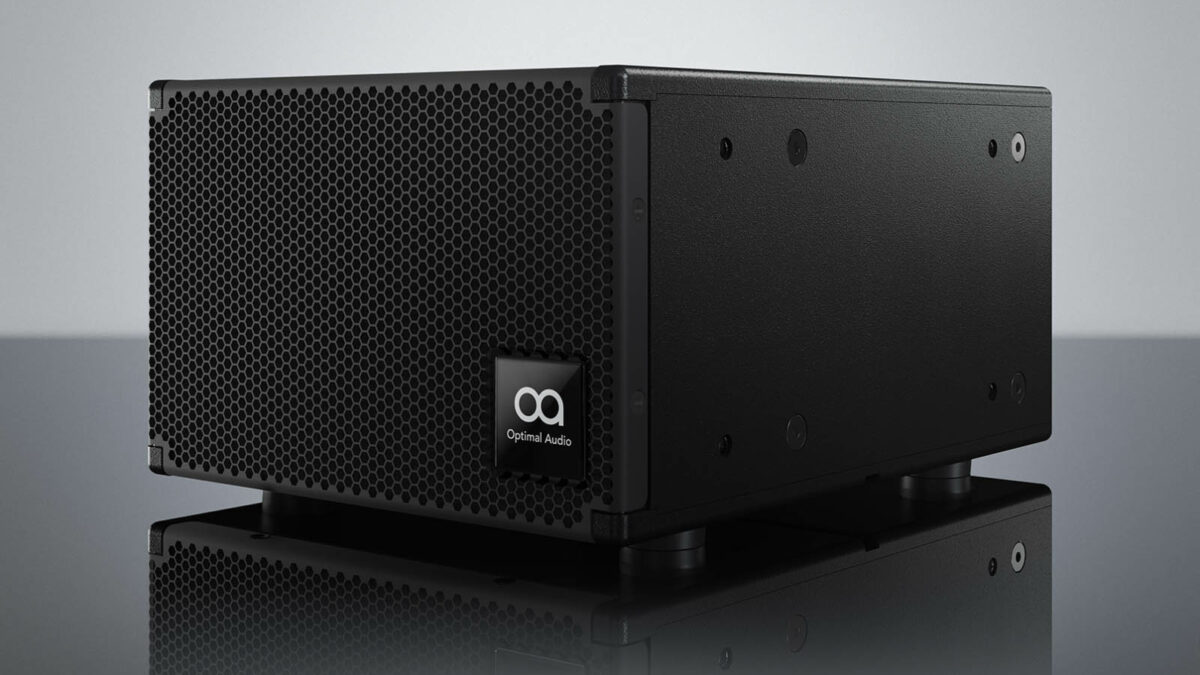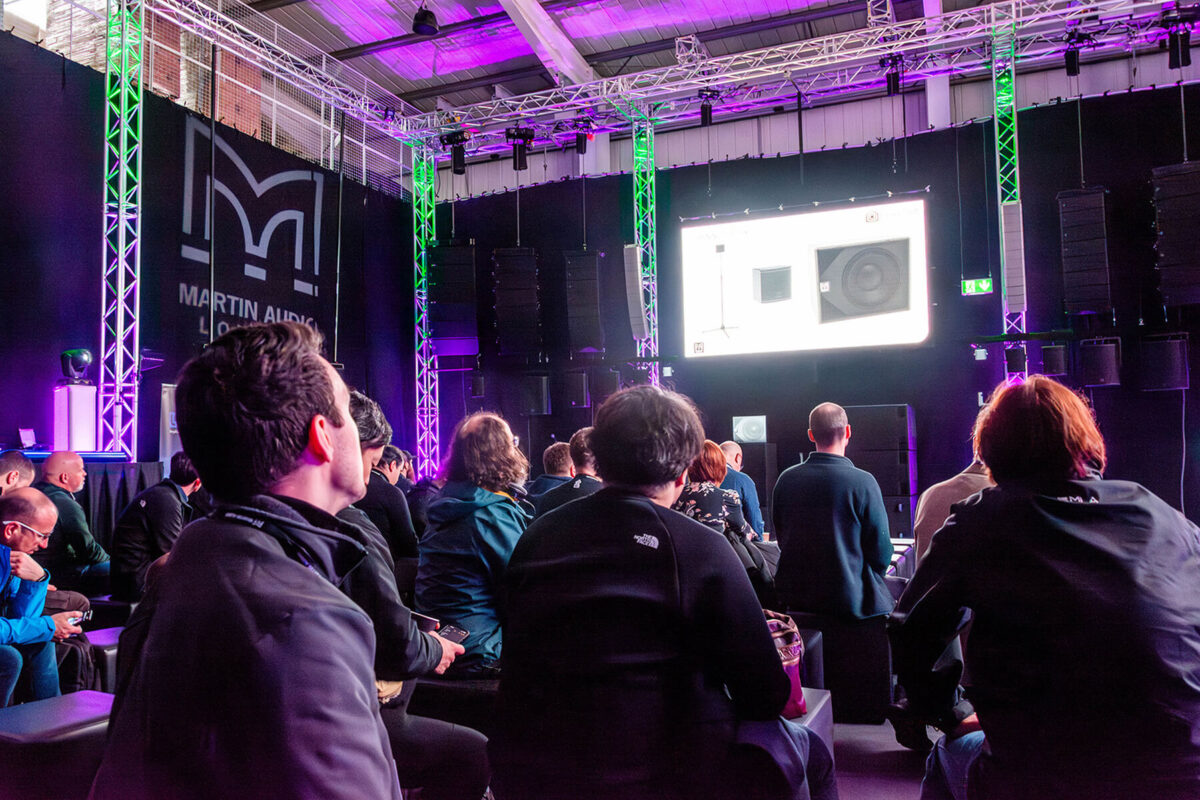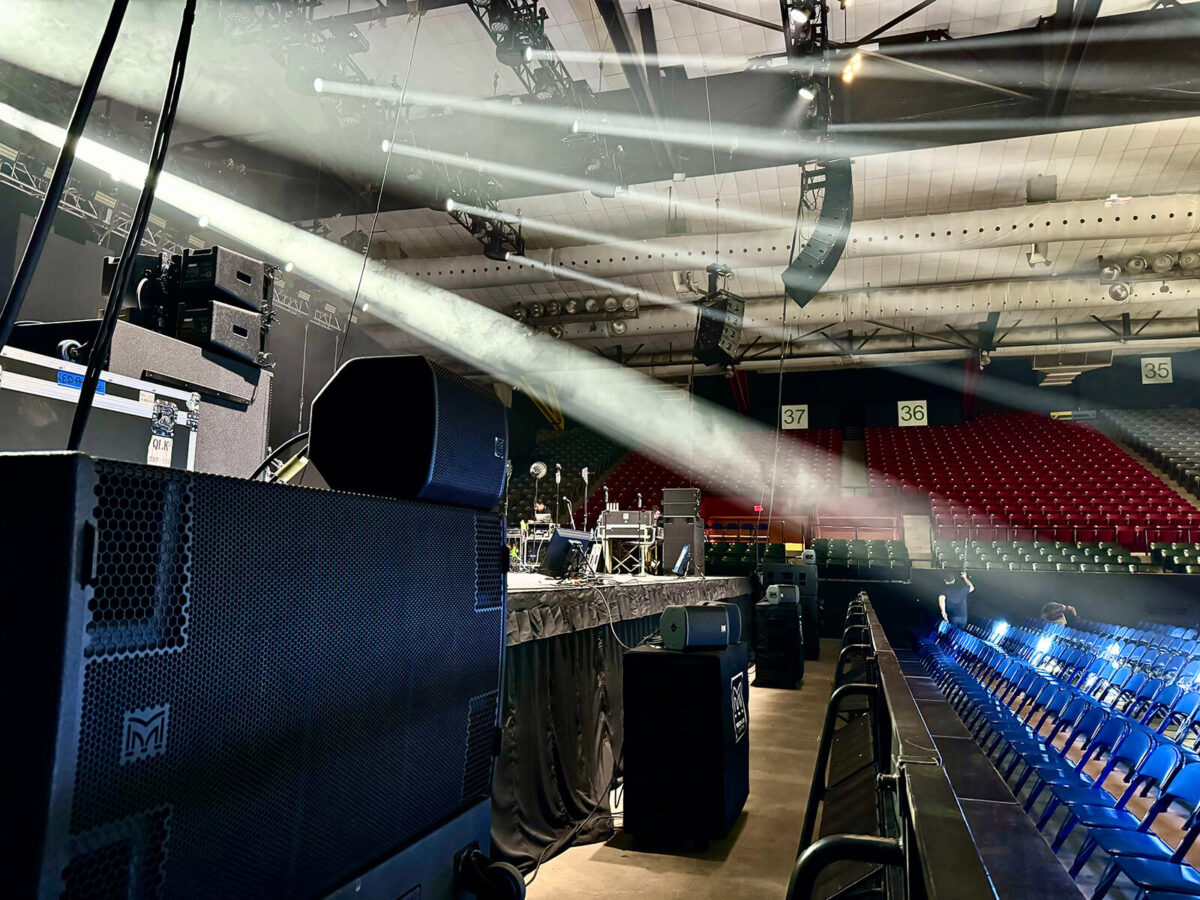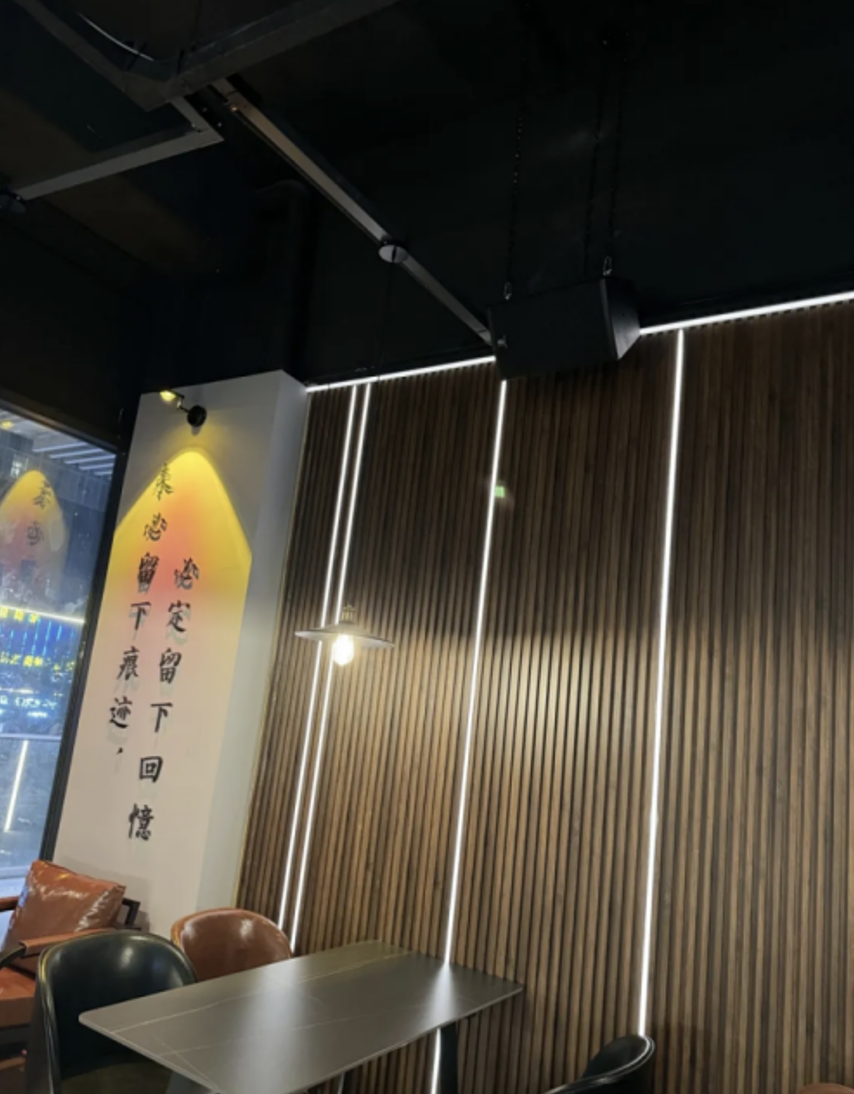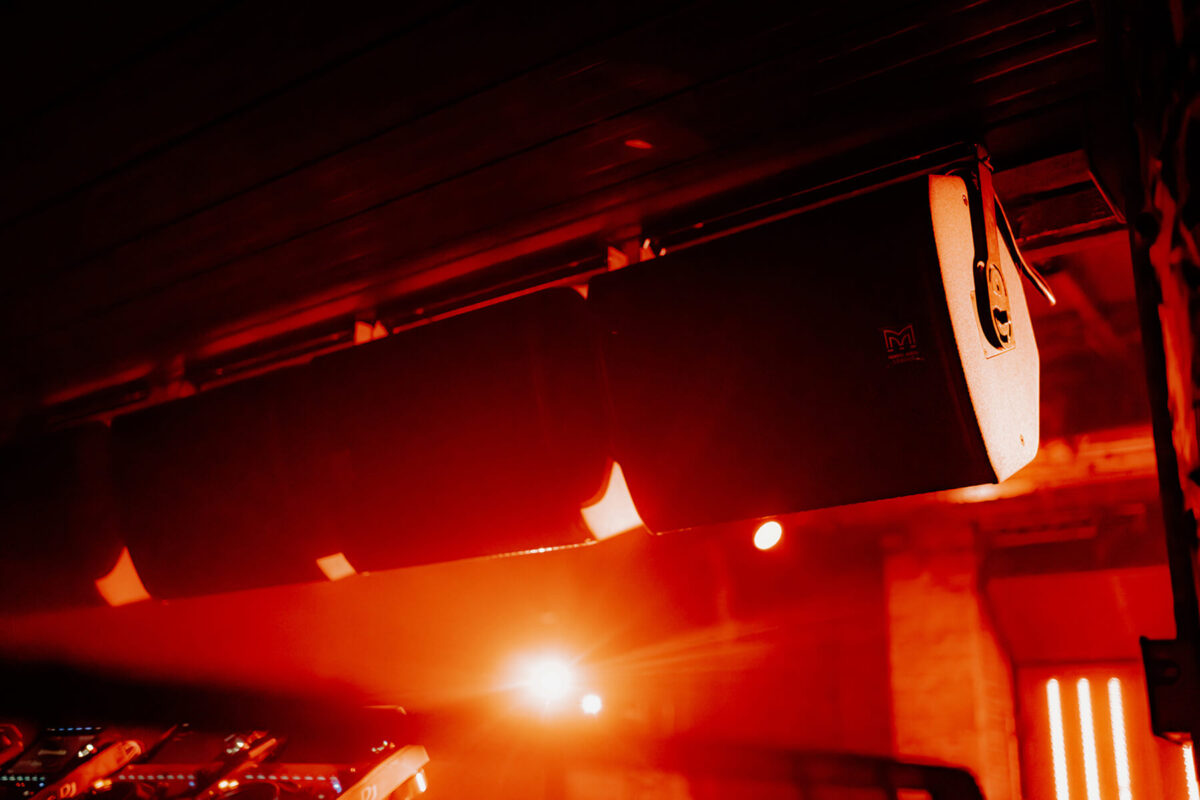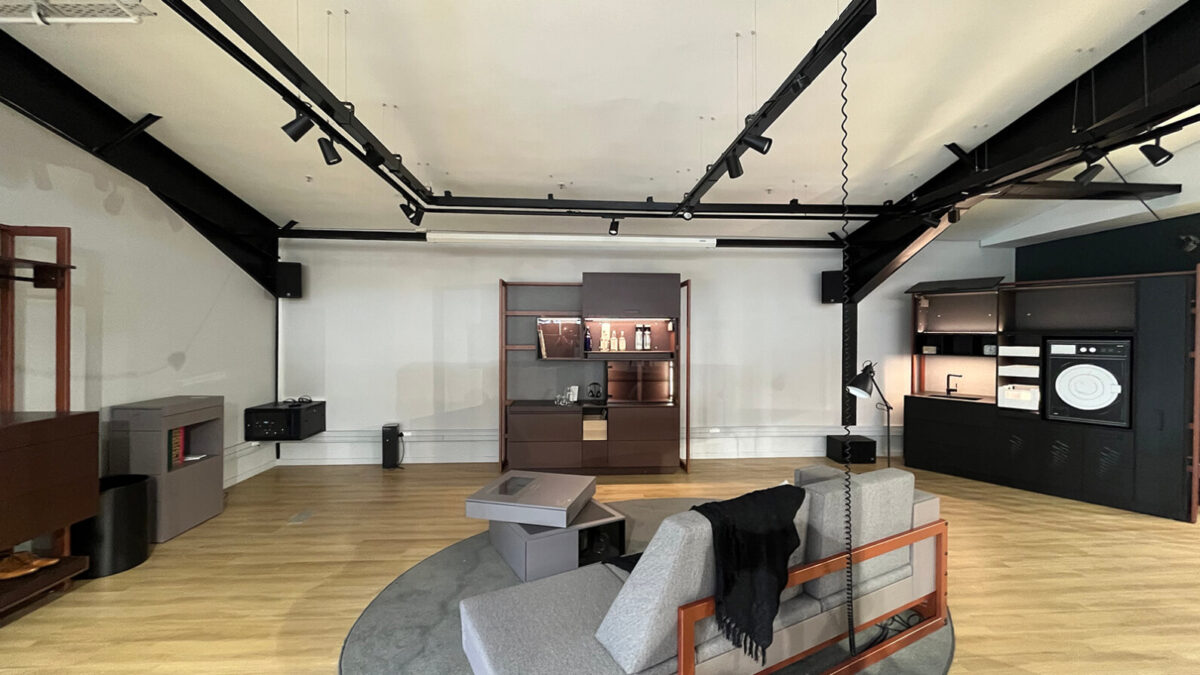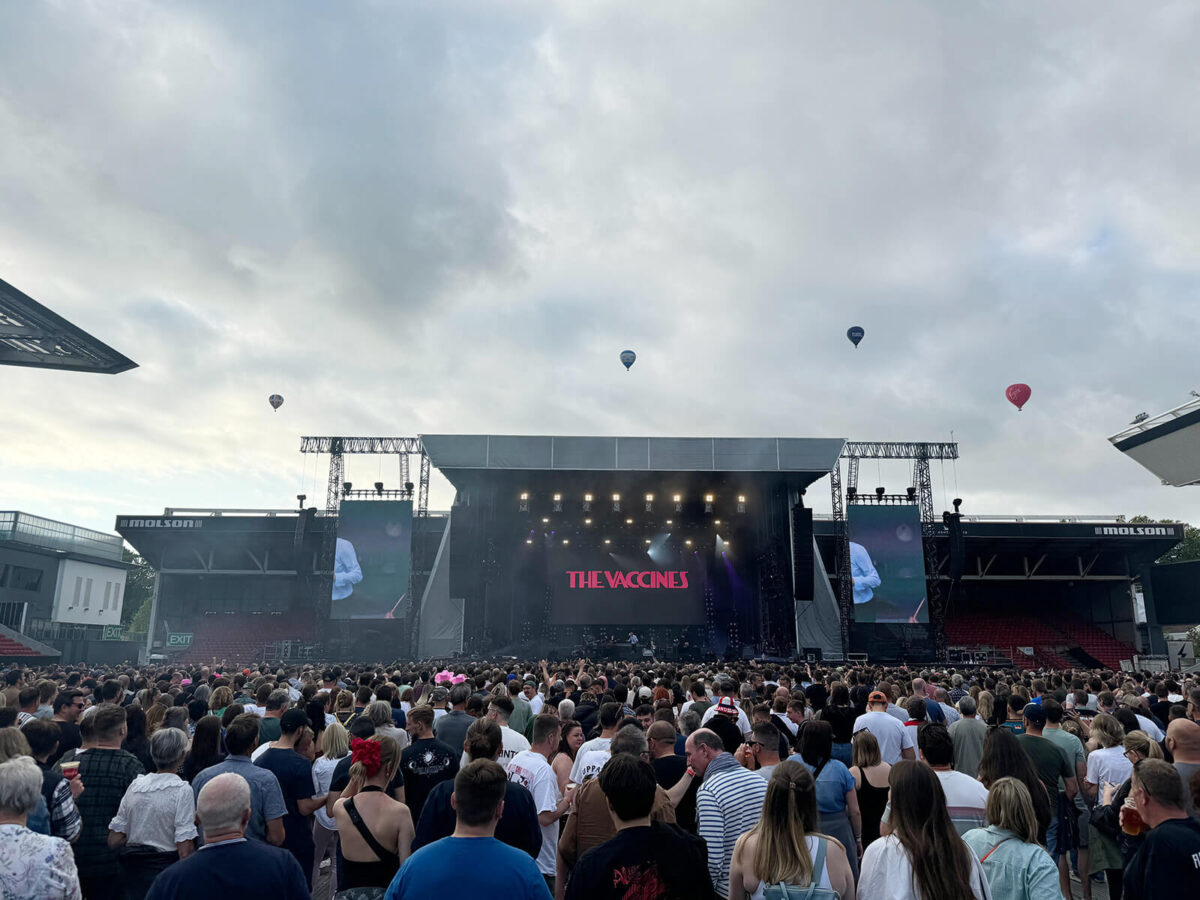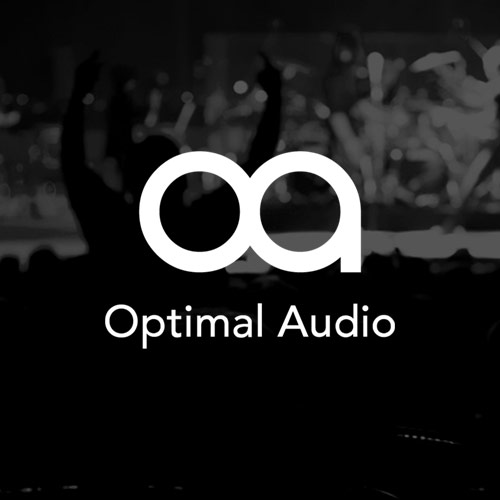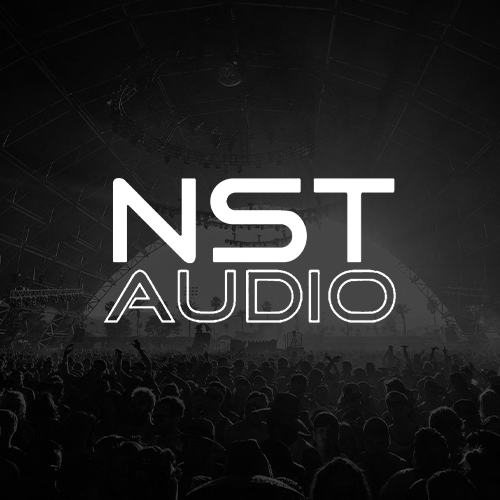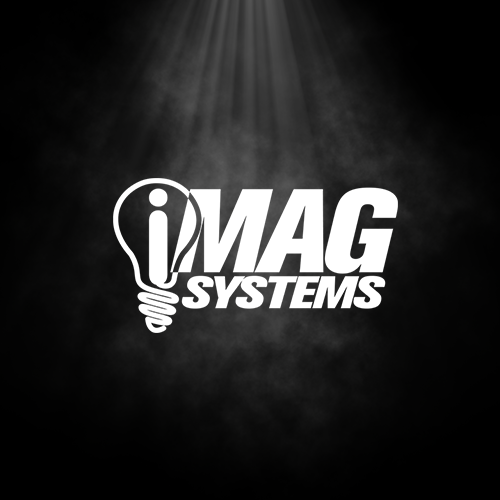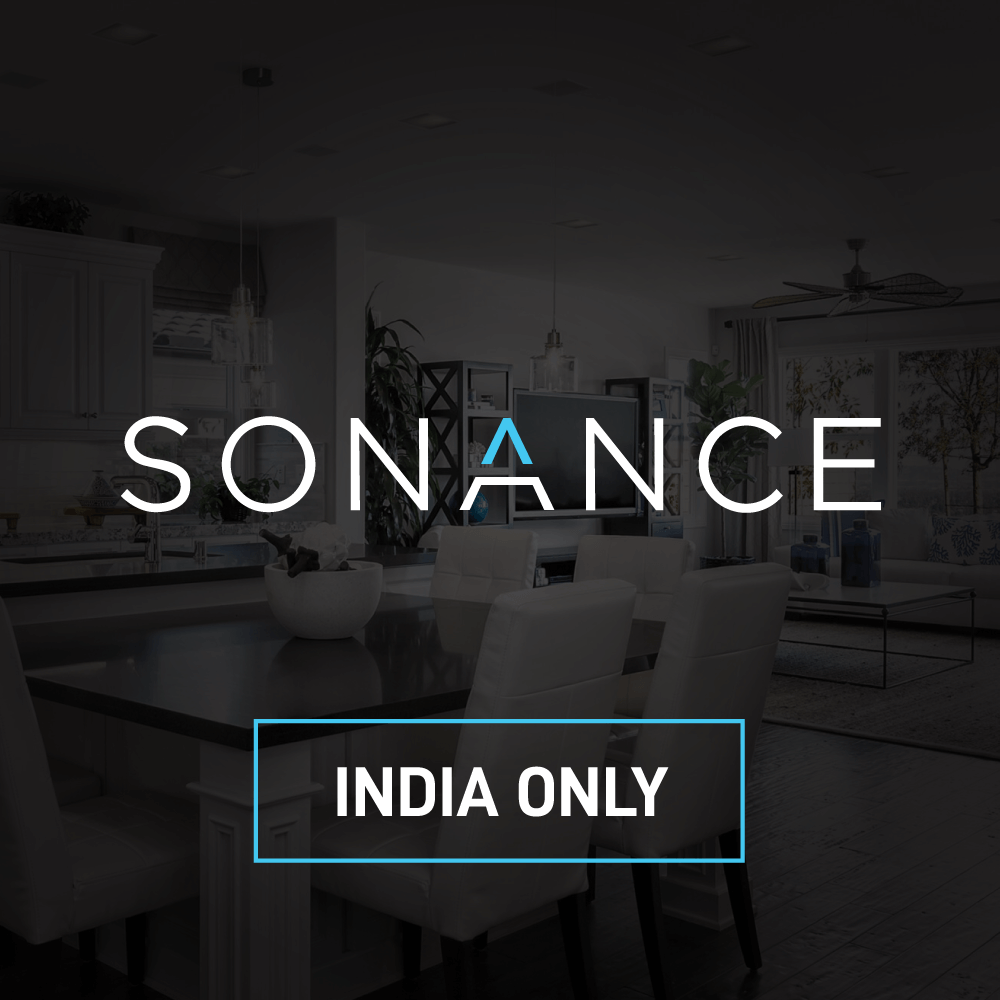FIJI: Christian Mission Fellowship International (CMFI) is a rapidly growing church headquartered in Suva, Fiji. Established in 1990, its 30,000 members and missionaries serve in 120 countries across 5,000 churches worldwide.
CMFI is headquartered in Suva at The World Harvest Centre (WHC), where an impressive, round church building hosts over 3,500 worshippers, a full band, production, and a 100-member choir.
Since its construction in 1990, the centre has installed numerous sound systems; however, none have been able to overcome the challenges of the large reverberant space and the sound quality requirements of the growing church.
Enter Head Pastor Suliasi Kurulo, who finally decided that the time had arrived to call in the professionals and deliver the dream to its members. After many proposals and CAD models, Suliasi, his production crew and the committee awarded the project to Carey Leghorn from CVAV Australia, based on a Martin Audio solution.
Carey, together with Anthony Russo from Technical Audio Group, Martin Audio’s Australian representative, made several visits to WHC to evaluate the scale of the project and create a design that would meet the brief’s requirements.
From Carey’s viewpoint, “This project was one of the most difficult I had ever worked on. We faced several challenges, from working at 15m heights for PA rigging to custom steel fabrication on site. Additionally, we had to install several kilometres of cables through a complex roof structure. Also, much of the fabrication had to be done in Australia with no room for error once the project was containerised and sea freighted.”
Choosing the final speaker design involved hundreds of hours of modelling, with the final decision to use a Martin Audio Wavefront Precision line array system.
Once I saw it hang together in place, it was a dream moment for me.
The services are major concert events with 3,000-plus people singing, supported by a full band and choir. Therefore, the system had to achieve SPLs generally associated with an international touring act. “I believe every seat needs to be the best seat, all while trying to keep an eye on a budget. There is a fine line where you can’t compromise,” says Anthony.
Martin Audio’s DISPLAY prediction software was used to design a 56-cabinet WPM system, which proved the optimal solution. The main hang consists of a 32-cabinet left and right system in two-box resolution, along with a 10-a-side WPM operating in one-box resolution mode.
The system is underpinned with two stacks of six Martin Audio SX218 subwoofers per side—each individually processed.
Despite the challenges posed by the rigging and structural steelwork, the CVAV crew achieved the seemingly impossible feat of hanging a centre cluster and allowing beam steering of the sub-cluster, thereby implementing a textbook solution.
“Once I saw it hang together in place, it was a dream moment for me,” commented Anthony. “It’s extremely rare to get subs in that position in churches, where projectors, sightlines and roof weight loadings often constrain you. This results in compromised split left and right subs and the inevitable power alley and off-axis cancellations.”
The choir stalls are covered with eight individually amplified and processed CDD12 two-way cabinets from Martin’s coaxial CDD range, ensuring maximum coverage and performance. The main console provides a tailored mix send depending on the choir’s requirements.
An eight-cabinet Blackline X12 delay system was installed to complement the main PA. This enhances the overall experience for the rear congregation and optimises the coverage of the main arrays to the main seating area.
Three CDD10 speakers across the stage apron supplement the front rows to complete the main system. The stage is covered by a foldback system comprising six LE100 wedge monitors.
The tech team were able to report wholly successful results after completing the objective measurements and carrying out a subjective analysis.
Anthony Russo points out that only experienced ears could make the final decision on system balance. Pure measurements alone will never suffice. “A half dB here or there, or a fine ratio adjustment on a compressor, can make all the difference. Well-engineered systems, if aligned correctly, respond to even the slightest changes. Even then, you need to keep checking what you think you hear vs what the measurement mic shows you.”
D-Day arrived and culminated in one of the biggest moments for not only the church but also for Fiji, with many island dignitaries in attendance and streaming to thousands online.
Anthony Russo personally addressed thousands on stage and, in an emotional speech, praised the church’s vision. Importantly, he stressed that this project was not about cutting-edge technology and outstanding quality, but the congregation could now truly appreciate the sound of their musicians, choir, and preachers.
In conclusion, he said, “This location had become a place of learning inspired by a team, welcomed like family by its people and, in turn, willing to share their knowledge for future generations. Simply put, The World Harvest Centre ‘University’ had arrived.”
Click here for original article.

